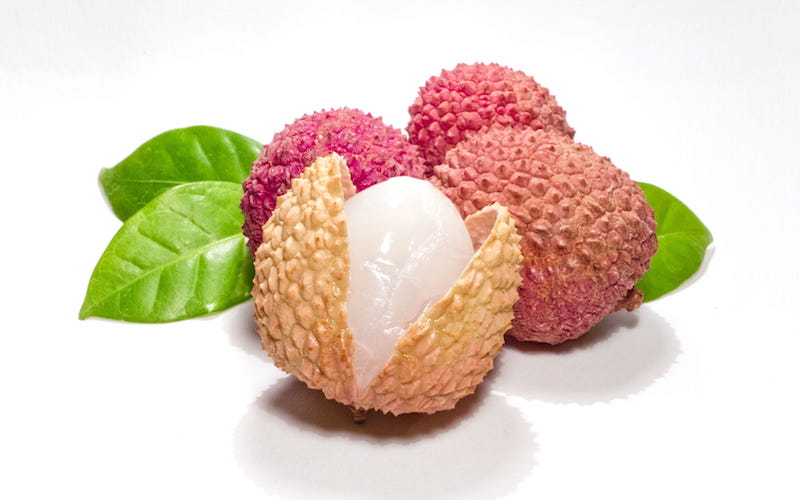patterdaleterriers.co.uk is a participant in the Amazon Services LLC Associates Program and other affiliate advertising programs designed to provide a means for us to earn fees by linking to Amazon.co.uk and affiliated sites. Affiliate links may be used on this page and in patterdaleterriers.co.uk articles, but they do not impact on the price that you pay and they do help me to get this information to you for free. Read my privacy policy for more information regarding affiliates.
Organic, slow-cooked and raw diets are becoming much more popular and with it, dog owners are beginning to search for healthy alternative to pre-packaged dog treats. Can dogs eat Lychee? Could Lychees be the next great dog treat?
Lychees are a tropical fruit that look like a lumpy strawberry. In fact, they are also called the Chinese Strawberry! Most are grown in India and China, but other tropical and sub-tropical countries also grow them.
When ripe, they have a pink or reddish-brown thick outer skin. The edible flesh is creamy white, soft and has a taste somewhere between a pear and a grape. Like most tropical fruits, lychees have a large pit, or stone in the centre.
Health Benefits of Lychee for Dogs
Lychees are high in dietary fibre, which is great for a dog’s digestive system. Fibre is a prebiotic and healthy gut bacteria feeds of it. Dogs need to maintain a constant level of healthy gut bacteria to keep their digestive system functioning well.
These fruits are also low in calories, which means they are a great option for dogs on a calorie-controlled diet such as for weight loss or diabetes. This means that you can give small amounts of lychee without having to worry about potential weight gain.
Vitamins are also found in abundance in Lychee flesh, including Vitamin C, Copper and Potassium. Vitamin C has similar health benefits for dogs as it does for humans. It is an antioxidant that helps reduce inflammation, improves immune function and is often given as a supplement to dogs with joint problems.
Copper is important for several processes within a dog’s body. It is necessary for the absorption of iron and the development of hair pigment. It is also needed for the formation of bone and connective tissue; the maturation of red blood cells and it serves as an antioxidant.
Potassium is required for the development and functioning of a range of things including muscles, blood vessels, nerves, and digestive enzymes. Low Potassium levels can cause Hypokalaemia.
Risks of Lychee
If an unripe Lychee is eaten, it can be poisonous to both humans and dogs. Unripe Lychee flesh contains an amino acid that affects blood glucose levels. High levels of glucose in the blood can cause severe symptoms such as excessive thirst and urination, dehydration, lethargy or collapse and nerve or tissue damage. Any breed can suffer from hyperglycaemia, but smaller breeds like terriers are a higher risk. Unripe Lychees have a green skin.
If eaten whole, Lychees are a choking hazard and may also become blocked along the digestive tract. They are roughly the same size as a strawberry so most breeds would have no trouble swallowing them. The skin of a lychee is very thick and difficult to digest.
Lychees produce saponins. These are a toxin produced by certain plants to deter insects. It can cause stomach pains, vomiting, diarrhoea, drooling, muscle spasms and seizures.
Conclusion – Can dogs eat Lychee?
Although there are some risks involved with including lychee’s in your dog’s diet, they can be given safely as long as they are prepared a certain way. Always make sure your lychees have a pink or red skin. Green skins mean the lychee is not ripe and can be toxic if ingested.
Peel and discard the skin along with the pit from the centre. The layer of white flesh around the pit is safe for dogs to eat and has an extremely sweet scent, so they’ll no doubt enjoy it! Remember to only feed a small amount the first time and keep an eye out for any side effects. If you found this article interesting, you may also want to read


